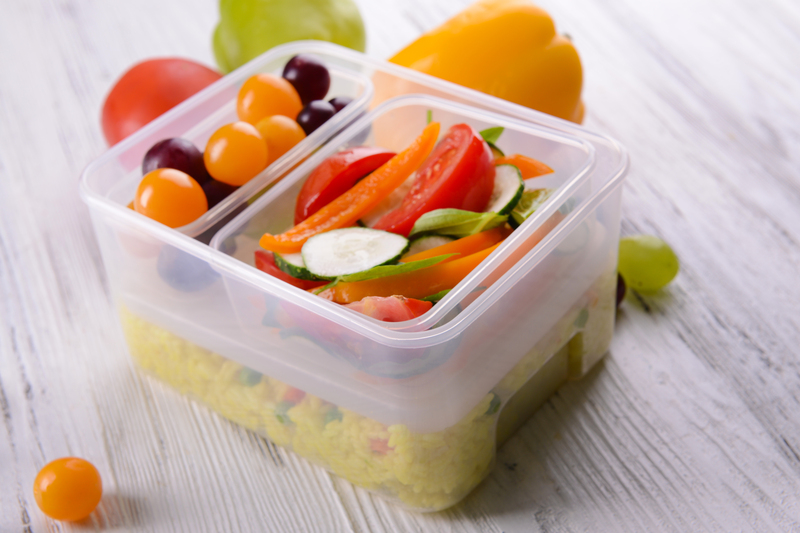Plastics to Bypass for Better Health and Safety: An In-Depth Guide
Plastic materials have become a ubiquitous part of modern life, used everywhere from food packaging to children's toys. However, mounting scientific evidence links certain types of plastics to adverse health and environmental effects. In this comprehensive article, we delve into the plastics to bypass for better health and safety, why you should avoid or limit them, and offer safer alternatives to safeguard your well-being.

Why Avoid Certain Plastics?
While plastics provide convenience and durability, some types contain chemicals that can leach into food or water, disrupt hormones, or cause other health hazards. Recognizing the plastics to bypass for improved health and safety is crucial for informed consumption and a healthier home environment.
- Endocrine Disruptors: Some plastics contain compounds that mimic or interfere with hormones, potentially leading to reproductive issues, developmental delays, or other chronic conditions.
- Environmental Toxins: Improper plastic disposal results in microplastics entering ecosystems, harming wildlife and possibly returning to the human food chain.
- Heat-Induced Hazard: Certain plastics release toxic chemicals when heated or exposed to sunlight, increasing exposure risks.
Understanding Plastic Identification Codes and What They Mean
Products often have a Resin Identification Code (RIC)--a number (1-7), usually found at the bottom of containers inside the recycling symbol. This code helps consumers identify the plastic type and its associated risks.
- 1 (PET or PETE): Polyethylene Terephthalate
- 2 (HDPE): High-Density Polyethylene
- 3 (PVC): Polyvinyl Chloride
- 4 (LDPE): Low-Density Polyethylene
- 5 (PP): Polypropylene
- 6 (PS): Polystyrene
- 7 (Other): Various, including BPA, polycarbonate, and more
Not all plastics are equal in terms of safety. Let's examine the most concerning types to avoid.
Plastics to Bypass for Better Health and Safety
1. Polyvinyl Chloride (PVC) - RIC #3
PVC is a widely used plastic in plumbing pipes, toys, shower curtains, and food packaging. However, to make it flexible, manufacturers often add phthalates, which are known endocrine disruptors.
- Health Concerns: PVC may leach toxic chemicals like phthalates, lead, and vinyl chloride (a known carcinogen) into food or skin, posing risks especially to children and pregnant women.
- Bypass Tips: Avoid products labeled with #3 or "PVC." Choose shower curtains, toys, and food wraps made from alternative materials like cotton, silicone, or glass.
2. Polystyrene (PS) - RIC #6
Commonly known as Styrofoam, polystyrene is used in disposable cups, plates, takeout boxes, and egg cartons. When heated, PS can release styrene, a possible carcinogen.
- Health Risks: Styrene exposure is linked to headaches, respiratory irritation, and a potential increased cancer risk, especially when food is microwaved in polystyrene containers.
- Safety Suggestions: Opt for paper, glass, or stainless steel alternatives for food storage and serving.
3. Polycarbonate and 'Other' Plastics - RIC #7 (BPA, BPS, etc.)
The #7 category includes plastics that don't fit elsewhere, notably polycarbonate, which often contains bisphenol A (BPA) or its substitutes like BPS and BPF.
- Hidden Risks: BPA and related chemicals can migrate into food and drinks, especially when exposed to heat or acidic contents.
- Health Effects: These compounds are linked to hormonal disruption, obesity, diabetes, neurobehavioral disorders, and certain cancers.
- Action Steps: Steer clear of plastics labeled #7 or "PC" (polycarbonate), particularly in food storage containers, reusable water bottles, baby bottles, and canned food linings. Choose BPA-free and non-plastic alternatives instead.
4. Low-Quality Plastics and Single-Use Plastics
Many single-use plastics, such as cheap food containers, plastic bags, and utensils, can also pose health hazards due to poorly regulated chemical additives.
- Concerns: These products may release unknown toxins, especially when recycled plastics are mixed with additives or colorants of dubious origin.
- Better Choices: Opt for reusable and high-quality food-safe materials like glass, stainless steel, or certified food-grade silicone.
Plastics That Are Considered Safer (But Still Require Caution)
Not every plastic is equally risky. Some are considered safer for use, especially when not exposed to heat or repeated wear. However, they should still be used with care.
- 1. HDPE (#2): Used for milk jugs and detergent bottles; generally stable, but avoid heat.
- 2. LDPE (#4): Commonly found in sandwich bags and squeeze bottles; considered safer but still best to limit use with hot foods.
- 3. PP (#5): Used for yogurt containers and baby food jars; safest among common plastics but not indestructible.
Even with these safer choices, avoid microwaving or dishwashing to minimize wear and chemical migration.
Everyday Products with Plastics to Bypass
To make it easy to identify and avoid the most toxic plastics, here's a list of products commonly made from concerning plastics:
- Food Containers: Especially pre-packaged meals, takeout containers (#6 PS, #7 PC), and cling film (often PVC).
- Drink Bottles: Particularly polycarbonate sports bottles (#7) and single-use water bottles that can degrade over time.
- Baby Products: Baby bottles, sippy cups, and pacifiers with #3, #6, or #7 plastics.
- Microwave Meals: Trays and wraps that may leach chemicals when heated.
- Plastic Toys: Soft or scented toys made from PVC or plasticizers.
- Household Goods: Shower curtains, flooring, raincoats, and imitation leather can all be made from PVC.
Practical Steps to Reduce Reliance on High-Risk Plastics
1. Read Labels Carefully
- Look for the recycling code on the bottom of products.
- Avoid codes #3, #6, and #7 when possible, especially for food and drink storage.
2. Choose Alternative Materials
- Use glass jars, ceramic dishes, and stainless steel bottles for food and beverages.
- Opt for beeswax wraps or silicone lids instead of PVC-based plastic wraps.
3. Limit Heating of Plastics
- Never microwave food in plastic containers unless specifically labeled "microwave safe" (and preferably use glass instead).
- Avoid hot liquids in plastic bottles or cups.
4. Prioritize Fresh and Whole Foods
- Reduce consumption of pre-packaged or processed foods, which often come in risky plastic packaging.
5. Invest in Safer Kitchenware
- Gradually replace old plastic cutting boards, utensils, and storage containers with glass, bamboo, or stainless steel counterparts.
Frequently Asked Questions about Avoiding Harmful Plastics
1. Are 'BPA-free' products actually safe?
BPA-free plastics may contain substitutes such as BPS or BPF, which are not any safer. Always prefer non-plastic alternatives when possible.
2. How do I dispose of unsafe plastics properly?
Dispose of hazardous plastics through designated waste or recycling facilities. Never burn plastics, as this releases harmful toxins into the air.
3. What about biodegradable plastics?
Biodegradable plastics may sound promising, but they often require industrial composting and might still contain concerning chemicals. When possible, choose biodegradable options certified for home composting and free from toxic additives.
4. Which plastics are safe for children?
For baby bottles, utensils, and toys, choose products made from food-grade silicone, glass, or extensively tested plastics like PP (#5) and HDPE (#2)--but always check for third-party safety certifications.
Environmental Impact of Avoiding Harmful Plastics
Bypassing plastics that pose health and safety risks not only protects you and your family--it supports the planet. Here are several long-term benefits:
- Reduced Microplastic Pollution: Fewer single-use plastics mean less plastic breaks down into microplastics, which contaminate oceans, soil, and air.
- Decreased Chemical Burden: Avoiding toxic plastics lowers demand for hazardous chemical production and disposal.
- Incentivizing Safer Innovations: By purchasing safer alternatives, you support companies investing in sustainable materials.

Conclusion: Empower Your Health and Home with Informed Choices
Recognizing which plastics to bypass for better health and safety is a proactive step toward a healthier, more sustainable lifestyle. By identifying high-risk materials like PVC, polystyrene, and polycarbonate, reading labels vigilantly, and opting for glass, stainless steel, or silicone where possible, you can dramatically reduce your exposure to harmful chemicals. Remember, progress does not demand perfection--every swap away from hazardous plastics is a meaningful contribution to your health and the environment.
Start today by auditing your kitchen, bathroom, and children's toys--choose smarter, safer alternatives, and share this knowledge to encourage healthier choices in your community.
Further Resources
- Environmental Working Group: Plastics Guide
- Plastic Pollution Coalition
- U.S. Food & Drug Administration: Plastics and Food Safety
Your journey to a safer, toxin-free environment begins with knowledge and small, sustainable actions.